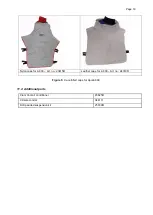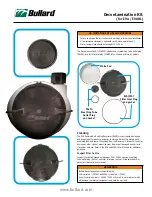
Page 4
1 Scope of manual
This manual covers the startup, operation, maintenance, replacement of parts and measures that ensure
the safe operation of the Apollo 600 CE protective helmet.
Read the entire manual before startup or operation of the equipment.
The following additional components may be used in conjunction with the Apollo 600 CE blast helmet:
Article no.
Description
Remarks
03580 D or 03527 D
CPF-20 or CPF-80 air
filter
Installation between air supply and air sup-
ply line
23825D
Clem Cool air conditioner
In place of the pressure regulation valve to
cool the air
04411I
Climate control
In place of the pressure regulation valve to
heat or cool the air as required
These additional components are installed between the air supply and the air supply line.
25189D
DLX padded suspension
kit
Additional component for a better and more
comfortable fit
24310D
Leather cape for Apollo
600
In place of the nylon cape (e.g. if a lot of
blast media rebounds)
24405D
Rubber cape 4436
In place of the nylon cape (e.g. if a lot of
blast media rebounds); lighter than the
leather cape
24406D
ASS cape 4436 RA
In place of the nylon cape if using fall pro-
tection during blasting, rubber
22892D
CMS-2 carbon monoxide
alarm
Carbon monoxide monitor - located outside
the helmet
24613D
CMS-3 carbon monoxide
alarm
Carbon monoxide monitor - integrated in the
helmet
2 Application and Limitations
2.1 General description
The Apollo 600 CE blast helmet was developed especially for use in blasting operations and is approved
in accordance with DIN EN 14594:2018 (and MSHA-NIOSH).
2.2 Restrictions and information in acc. with DIN EN 14594:2018
a) The helmet enables the wearer to be supplied with breathable air, which must comply with EN
12021. The air is fed at a continuous flow rate to a mask via a breathing line. The equipment has
an adjustable air flow valve that is worn by the operator. An air supply line links the equipment
wearer with the air supply.
b) Excess and exhaled air is released to the ambient atmosphere. The following temperatures are
prescribed for:
Storage:
0°C to +30°C
Operation:
-6°C to +40°C
Transport and handling:
-20°C to +50°C





































